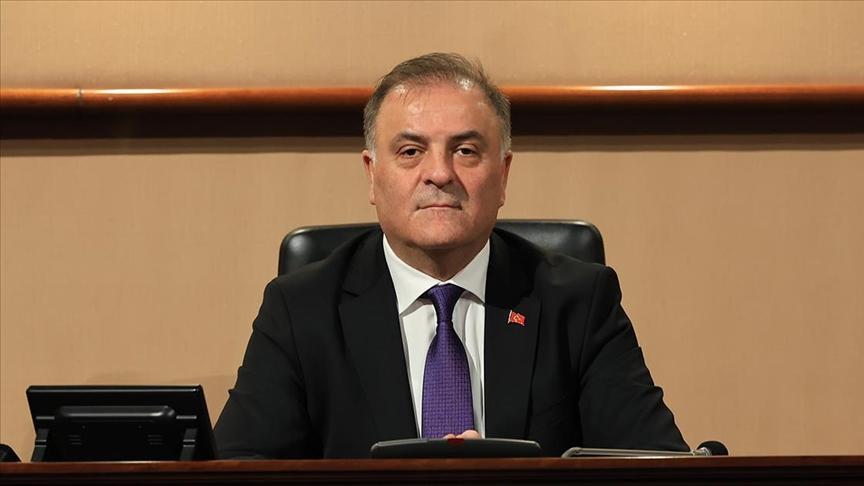Museum takes visitors back to Anatolian history
ANTALYA

A museum in Turkey’s south sheds light on different periods of Anatolian history, taking visitors on a journey through time.
Located in the Mediterranean province of Antalya’s city center and known as one of the most significant archaeology museums of the world, Antalya Museum stands out with its treasures and sculptures from different periods.
Founded in 1922 in the historical old town and moved to Konyaaltı Avenue in 1972, the museum sheds light on many historical periods starting from Dark Age until the Ottoman era.
The museum exhibits Ottoman and Seljuk period treasures, marble sarcophagi reflecting the archaeology of the region, statues representing gods, emperors, empresses and mythological heroes belonging to the Roman period, as well as jewelry, glass, bronze and ceramic artifacts, and prehistoric finds from the Karain Cave.
A total of 6,487 works are waiting for visitors in the museum.
While nearly 175,000 people visited the Antalya Museum in 2019, this figure exceeded 45,000 last year despite the COVID-19 outbreak. Some 6,675 people visited the museum in the first three months of this year.
The artifacts that were smuggled abroad but later brought to Turkey as a result of the efforts made by authorities also attract attention to the museum.
Pieces of the “Brooklyn Tomb” brought from New York in 1995 and the “Tomb of Heracles” brought from Germany in 1998 are exhibited at the museum. Some 1,679 coins, known as the “Elmalı Treasure,” brought from the United States in 1999 are also in the inventory of the museum.
As part of the latest work, it is hoped that some of the Sion Treasure, which is on display at the Dumbarton Oaks Museum in the U.S., will return to the Antalya Museum.
The treasure comprising silver church items from the sixth century B.C. was found in Korydalla Ancient City in Antalya’s Kumluca district in 1963.
Speaking to state-run Anadolu Agency, Antalya Museum Director Mustafa Demirel said they have one of the largest sculpture collections in the world.
Noting that the sculptures and findings that have been unearthed in the excavations in Perge Ancient City since 1946 are exhibited in the museum, Demirel stated that nearly 50 important sculptures were unearthed, especially after 2012.
Stating that all the works were prepared for display after restoration in a laboratory, Demirel said that visitors have the opportunity to examine works chronologically, from the fossils period to the Karain Cave, the earliest settlement in Anatolia, to the works of the Eastern Roman period and the Seljuk Empire.
“Our museum attracts a lot of attention and stands out with the works it has. It also appeals to visitors as a virtual museum,” Demirel said.
Stressing that they make arrangements in accordance with social distance rules for the health of visitors due to the COVID-19 pandemic, Demirel said that the museum was also open on Saturdays and Sundays for foreign tourists exempted from the restriction.
















